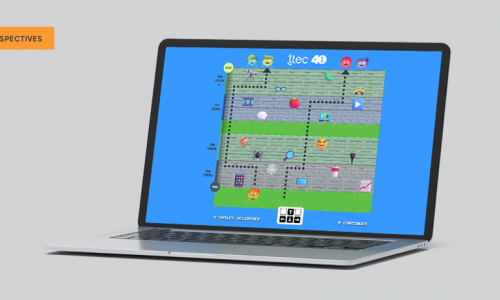"Grow consumer market and wallet share." This is one of SunTrust Bank's strategic priorities, formalized in its 2011 annual report by Chairman and CEO William H. Rogers, Jr. Such a statement is easy to say, but can be difficult to implement. There are many avenues a company can take to achieve such a goal. SunTrust chose to shift its business from a product-focused orientation into one that is more customer-focused and service-oriented. It's a way to build relationships and stand out from competitors in the crowded and volatile banking industry. "We believe that delivering industry-leading service quality will lead to improved client loyalty and increased consumer wallet and market share," Rogers wrote in a letter to shareholders earlier this year.
Instead of giving in to the temptation of just customer acquisition, SunTrust is working to improve client loyalty and share of wallet. In 2011, the company improved product penetration per relationship in eight of its 10 largest markets, Rogers noted. What's behind the company's approach to customer relationships? New actionable insight about customer behavior and the reasons behind their banking decisions.
"Customer centricity is the act of understanding, from the customer perspective, their needs and their perception of the value proposition, then delivering it in the best possible way," says Greg Holzwarth, managing director of client information at SunTrust. To that end, his team is tasked with creating actionable insight from both internal and external customer data. In the past, SunTrust studied customer behavior and made strategic decisions based on how customers acted. But, that wasn't enough. "We do just fine in understanding client behavior," he says. "We didn't know the 'why' behind the behavior. We needed to better understand customers' attitudes and emotions around their behavior. Knowing why someone does something is very useful."
Deeper customer insight yields new opportunities
SunTrust, along with Peppers & Rogers Group's iKnowtion analytics group and other partners, conducted a survey of U.S. consumers to learn about how and why they make their banking decisions. With this insight, the team created new multi-dimensional market segments that mixed behavioral and demographic information with common attitudes and needs shared by members of each segment. SunTrust then mapped the new segments to existing customers and prospects within its database to gain a clearer picture of its customers. The new segments combine customer needs, value, behavior, and attitudes in a holistic way. "We couldn't influence positive behavior until we understood their attitudes, goals, and emotions," Holzwarth says.
SunTrust observed changing attitudes around borrowing money, for example. Since the financial crisis, people still borrow money, but often it's for something pragmatic like education, a new car, or healthcare. They are less likely to borrow for extravagant or impractical reasons. And, they are looking for the bank to help them manage not only the actual loan, but also the best way to pay it back.
"We're now starting to marry our practices—how do we use that understanding to derive effective interactions," Holzwarth says. Internally, the new segments inform further market research, product development, and value proposition development. Externally, the insight guides advertising, direct marketing, and channel management decisions. This allows the company to optimize channels and interact appropriately with the right types of customers. In the loan example, bank employees are also encouraged to have conversations about customer cash flow and offer advice on the best ways to pay back the loan.
An understanding of customer needs and attitudes also helped ease dissatisfaction when the company recently transitioned away from its free checking program. The company looked at which customers would be impacted and determined unique ways to communicate with different customer groups. SunTrust was required to notify all customers, but those above the minimum deposit threshold received a different message than those who would be charged the fee. The team overlaid attitudinal and other information about those segments to create a strategy around how to help them make that journey. "We helped them understand what's happening, explained how it will affect them, and offered potential ways to avoid the fee or cope with the issue," Holzwarth says. In addition, employees were trained to acknowledge customer anger and be patient with customers as they processed this information.
Holzwarth notes that the initiative exceeded its goals. Overall satisfaction and loyalty initially dipped when the news was announced, as expected, but it's now higher than it was before the free checking program ended.
This new information also helps to enable CEO Rogers' vision of a service-based culture. "We're moving away from a traditional bank/client relationship," Holzwarth says. "In the past we've put it on clients to figure out what they need, then come to us. Now we build awareness and help them figure out what they need in a way that's best for them."
The sales function is evolving into more of an advisory role, for example. The goal now is to better understand client needs, then package a solution to meet those needs. "We're striving to change the experience so it doesn't feel as much like a traditional sales process," he says. Instead, "we're solution processing."
Salespeople create a dialogue with customers about their needs and circumstances before the sale is introduced. "It becomes a completely different conversation when it's not led by the product," Holzwarth says. The company hasn't removed the notion of "sales," but it's now at the tail end of the process.
SunTrust's analytics activities also revealed opportunity for improved customer communications. By observing customer behavior together with their attitudes and needs, Holzwarth's team quickly discovered that customers did not think in product terms. "The big a-ha moment was that none [of what customers talked about] was in the vocabulary of traditional banking products," he says. No one ever mentioned the word "account," for example. SunTrust changed how it spoke to customers to consider the client point of view. The word "client" is now a noun that is spoken in internal business discussions, something Holzwarth says was missing before. "Conversations need to change so they are in the customers' language," he says.
For example, SunTrust is in the midst of creating a detailed customer experience process based on savings from a customer point of view. It is enhancing its automatic bill pay tools so clients can create savings buckets with customizable nicknames. It will provide tools to help customers determine how much they should save per pay period, and set up automatic transfers into this new bucketed account. Customers can use the technology to pay themselves first and save for an upcoming event or purchase. It requires no new deployments on the bank's part. All that's needed is the customer perspective.
"It's not earth-shattering stuff, but it's important and relevant to customers," Holzwarth says. "We're changing the way we talk about and represent our products," which involves simply changing the conversation.
It's not the initiative that's important, he adds. It's the strategy and philosophy behind it. "Think about attitudes, not just behavior, and think about your strategy to influence positive attitudes and behavior for clients and the business," Holzwarth says.
A culture evolves
Like many executives, Holzwarth doesn't like to use the word 'culture' when discussing SunTrust's internal approach to doing business. For him, the term represents something that may not be perceived as actionable. Instead, he's proud of the fact that customer centricity is woven into the fabric of the company. "It's ingrained into what we do, rather than having to go through a checklist," he says, adding that it's not just marketing's job to think about the customer experience. "Everyone's a part of it, rather than being reminded that they have to think about the customer. We're all redesigning the client journey."






